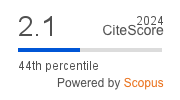A Self-Supervised GCN Model for Link Scheduling in Downlink NOMA Networks
DOI:
https://doi.org/10.4108/eetiot.6039Keywords:
GNNs, graph convolutional neural networks, Non-orthogonal multiple access (NOMA), link scheduling.Abstract
INTRODUCTION: Downlink Non-Orthogonal Multiple Access (NOMA) networks pose challenges in optimizing power allocation efficiency due to their complex design.
OBJECTIVES: This paper aims to propose a novel scheme utilizing Graph Neural Networks to address the optimization challenges in downlink NOMA networks.
METHODS: We transform the optimization problem into an optimal link scheduling problem by modeling the network as a bipartite graph. Leveraging Graph Convolutional Networks, we employ self-supervised learning to learn the optimal link scheduling strategy.
RESULTS: Simulation results showcase a significant enhancement in power allocation efficiency in downlink NOMA networks, evidenced by notable improvements in both average accuracy and generalization ability. CONCLUSION: Our proposed scheme demonstrates promising potential in substantially augmenting power allocation efficiency within downlink NOMA networks, offering a promising avenue for further research and application in wireless communications.
Downloads
References
Downloads
Published
Issue
Section
License
Copyright (c) 2024 EAI Endorsed Transactions on Internet of Things

This work is licensed under a Creative Commons Attribution 3.0 Unported License.
This is an open-access article distributed under the terms of the Creative Commons Attribution CC BY 4.0 license, which permits unlimited use, distribution, and reproduction in any medium so long as the original work is properly cited.




